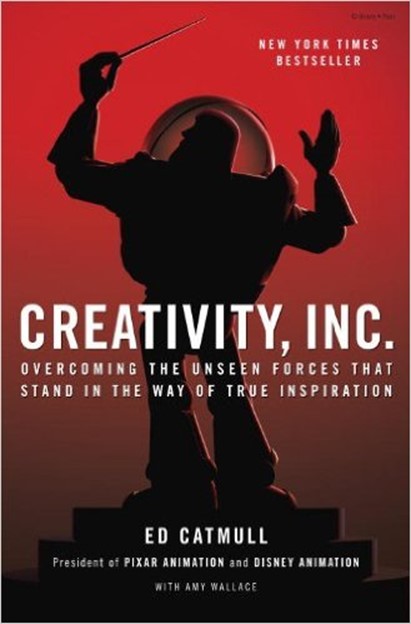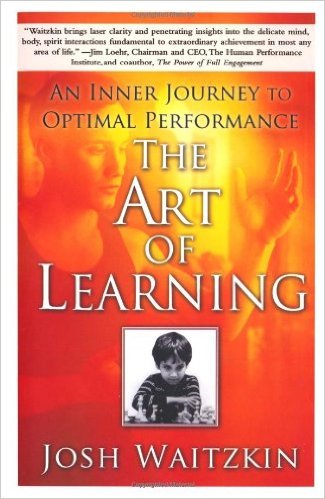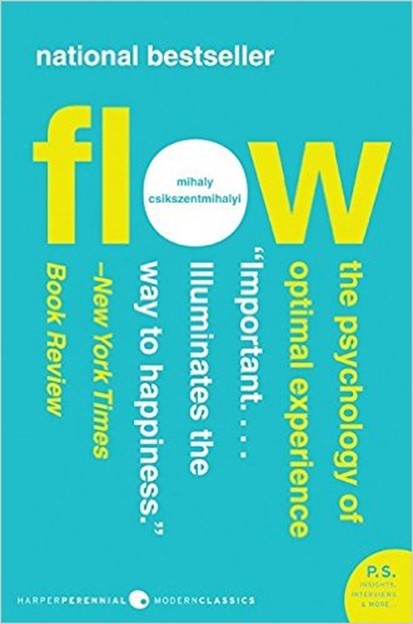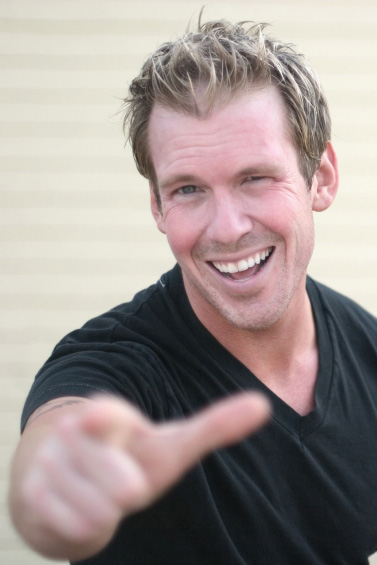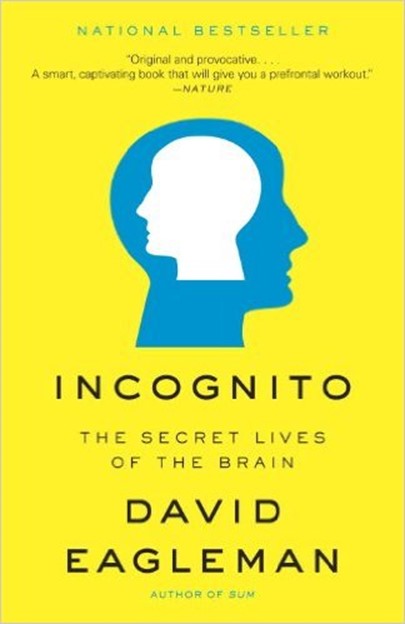Robert Bogue
November 9, 2015
No Comments
During my interview with Steven Kotler, the author of The Rise of Superman, he credited an idea to Josh Waitzkin. He was careful to share with me that Josh was a chess champion and the subject of the movie “Searching for Bobby Fisher” (which I’ve still not seen.) This lead me to wanting to find out more about what Josh had learned about high performance. For me he was an interesting bridge from the action sports focus of Kotler and the mental challenges of business that I was more focused on. Josh had started his career with chess and has “evolved” to be more focused on martial arts. It was in this context that I started reading The Art of Learning: A Journey in the Pursuit of Excellence.
A funny thing happened as I was reading. I began to realize how much the passion for excellence is more important – and more effective – than a pursuit of results. I began to realize how disruptive success can be because it breaks the routines that have led you to success. I also started reverberating like a tuning fork as Josh shared how he learned to think with music and how he started to see one thing – Tai Chi – as another thing – chess.
Conquering Challenges and New Challenges
Some of the most disconcerting times in my life have been when I’ve achieved a goal that I’ve set for myself. It’s weird. I finally reach the goal that I’ve set for myself and instead of the happiness that I expected, I felt uneasy. This isn’t too surprising given that most of my research on happiness says that we can’t predict our happiness. (Most notably this appears in Stumbling on Happiness but also tangentially in The Happiness Hypothesis and Hardwiring Happiness.) However, there’s more to it than just not being able to predict our happiness.
Perhaps it’s burnout. Once you’ve reached a pinnacle of your chosen interest, what challenge is next? (I wrote a pair of articles for TechRepublic.com in 2003 – Tips for Identifying Burnout in Yourself and Your Staff and Talking Shop: Break out of Burnout Mode at Work which discuss the nature and responses to burnout.) It could more simply be just disillusionment. Lottery winners find themselves with more money but the happiness they expected to flow from the money may have never come. According the The Success Principles, 80% of lottery winners in the United States file for bankruptcy within 5 years.
For me the answer once you’ve reached the pinnacle of your chosen area is simply to climb another mountain. In other words to create mastery in another way. The thing that I think is most powerful about Josh’s story isn’t his love for learning or his success at chess. The interesting thing to me is that he pivoted his life, found a new love, and worked to become great at it.
However, that’s about choosing your new challenges. What happens when the challenges choose you and they’re not the challenges that you want. While is sounds strange to say that sometimes the challenge of fame is a burden, it seems clear to me that it is and can be. Fame is such a powerful thing that it can pull you from your compass. Instead of being focused on the love of the art form and the desire to become better one can become paralyzed in the must be seen as box. (See The Anatomy of Peace for more about the box.) By taking your focus off your compass it’s easy to lose your way.
History is littered with famous people who have destroyed their lives as they have struggled to manage the results of their success. Their fame drove them into painful addictions to alcohol or drugs. Maybe they avoided the traditional chemical addictions and started extramarital affairs which ultimately brought them down. The pains that they weren’t allowed to deal with kept bubbling up into bad behaviors. (See Chasing the Scream for more about how pains bubble up into addiction.)
It should come as no surprise that the skills needed to be excellent at chess aren’t the same skills that it takes to deal with fame. The logic of the chess board and even the psychology of seeing into your opponents thoughts aren’t the same as being able to push away throngs of fans. The cold mathematics of pieces doesn’t compare to the warm compassion of “dealing with” people.
Endgame of Reduced Complexity
Larry Bird used to practice free throws more than anyone else in the game of basketball. It wasn’t because he was bad at them. It was because he wanted to be better. He knew that if he could perfect this simple fundamental he could change how he played his game, not just from the free throw line but also wherever he was on the floor. Josh describes working on chess from the end game first. Working with only a few pieces where the fundamentals really mattered.
By focusing on only a few pieces, he could focus on the learnings that he could leverage at every stage of the game. If he started from the beginning and had to evaluate all of the variables, all of the strategies, all of the options, he’d be awash in all of the complexity and his chances of learning would have been greatly reduced. By focusing on something small he could learn fundamentals without the distractions. (See Information Diet for more about distractions and The Paradox of Choice for having too many options.)
My chosen area has been technology. In truth for me it was my endgame of reduced complexity. I know that there are several people – including my wife – who would disagree that technology is not complex, however, for me it is simplicity. Electrons always flow the same way. I could work on a small program and I could understand what was happening. I could simulate what the computer would do. I could build mental models for how everything worked – and my models would generally be right. (See Sources of Power for more on mental models.)
I moved from development to infrastructure in a world where I could learn about the OSI model and learn how the network really functioned. I learned how RS-232 serial communications worked by debugging it and watching the signals with a breakout box. (See Serial AKA RS-232 and Relearning for more about how I learned RS-232 communications.) For me it was a world filled with fundamentals that I built up into solutions. I’d learn blocks of content and learn to understand how things worked and would assemble those blocks into larger and larger solutions.
I moved fluidly back and forth between infrastructure and development. I moved from one technology to another. There was always something to learn but also at the same time always something familiar. Even today when I’m working on some of the command line programs I remember the way that the DEC terminal servers for the VAX worked. The command structure between Cisco IOS and those early terminal servers is nearly identical.
Now my world is filled with a great deal more subtlety and complexity as I work on psychology and sociology. As I work to change organizations I had the technology to deal with – but that’s the easy part. The hard part is mapping enough of the internal psychology of the participants to build a model of how they will react – and how those interactions together form the emergent behavior of the organization.
Thinking to the Music
If I want to induce a flow state, calm myself, or just get into a rhythm of thinking, I’m going to pull out music to help. There’s music playing around me practically all the time. It’s not that I don’t need and enjoy silence at times – like when I’m reading. Instead, it’s that when I’m writing and when I’m working on creating I’ve typically got something going on in the background. I tend to think of it as a governor. It keeps my thinking speed in the right channel or zone. I’ve got playlists that include themes like love but also speed and intensity including a playlist called ‘Aggressive’.
At some level this makes sense. Robin Dunbar mentioned in an RSA talk that I was watching that dancing and singing triggers endorphin release – which is a very pleasurable experience. As I mentioned in my review of The Rise of Superman, the switch that happens from an adrenaline fueled stress reaction to the relaxed state in which we can enter flow is a critical one. It relies on nitric oxide for the switch but coming out of the release, but the landing zone is perfect for flow if the endorphins and dopamine get started.
Passion for Learning
If you were to ask Josh what he does best what might the response be? Certainly he could say chess and with all of the titles he’s one, it wouldn’t be hard to accept. After winning titles in martial arts he could just as easily say some form of martial arts. However, that’s not what he says. What he says is that what he does best is learn. He’s got a passion for learning. He’s got a thirst for learning more that isn’t easy to quench. It’s his passion for learning that drives him forward.
Carol Dweck speaks about a fixed mindset and a growth mindset in her book aptly titled Mindset. She speaks about how those with a fixed mindset are trapped in the belief that if they fail they’re a failure and that they can’t do better where those with a growth mindset use the set back as a learning exercise. I bring this up for a few reasons. First, Josh spoke repeatedly about how he leveraged his setbacks to fuel his growth. Perhaps it’s because his mother was a horse trainer that when he was “thrown off the horse” he “got back on.”
In his passion Josh had to trust his instincts. He says “my instinct is not to avoid the discomfort but to become at peace with it.” There’s wisdom in the idea that you have to become comfortable with being uncomfortable to be able to learn. If you stay inside your comfort zone, you’re not learning. The Success Principles describes it as “a prison you live in – a largely self-created prison.” The moments of greatest opportunity to learn are the moments when we’re the most uncomfortable. It’s not that we’re going to be comfortable all the time – that we can live without discomfort. However, what defines our learning is how we act in those moments of discomfort.
Sometimes opening ourselves up to this discomfort is necessary. Sometimes we have to leave open the possibility of losing so that we can learn. This means that we surround ourselves with people who are capable of beating us. Instead of being afraid of loss we welcome it – in so much as we can – as a way to learn. It’s not that losses don’t hurt, they do. It’s what you can learn from them – even when you’re “an expert.” Josh says that William Chen calls this Investment in loss. Whether you’re purposefully allowing an opponent an edge to make things more even or you’re picking more challenging opponents being willing to lose so that you can learn is an important component.
I can remember as I was playing Pokémon cards with other adults while my son was competing with the kids. I’d lose over and over again. I’d get clobbered by things in the game I had never seen. While I never wanted to be a grand master of Pokémon it was painful to endure defeat after defeat. Josh says that you have to win enough to keep your self-confidence up. In my case, I knew that this wasn’t my only thing so I could transfer my wins in other ways to support my ego while I got pummeled. I didn’t enjoy the experience but it taught me that I could persevere. It would be OK.
What I learned about the game was important but what I learned about myself was more important. I learned that I could allow my ego to be bruised even if I didn’t like it.
Ego Management
Managing our egos is a precarious thing. On the one side we are self-deprecating and depressed. We’re unable to get better because we’re filled with guilt and shame. (See Daring Greatly for more on guilt and shame.) One might describe it as being humble but Humilitas describes humility as “Power held in service to others” rather than lowering ourselves. On the other side, when we think too highly of ourselves we’re perceived as arrogant. We’re prevented from learning by the need to create the perception that we have it all together and that we don’t have anything else to learn.
Our ego is a well-protected mechanism in our psyche. As I mentioned in my review of Change or Die the book The Ego and Its Defenses catalogs 22 major and 26 minor defenses. It doesn’t like to be managed. It has defenses for that. There are a set of well warn tapes that play inside our head that try to keep our ego firmly entrenched in its position. Its position is built on a lifetime of messages of little tapes that play in our head. Our conscious perception of our ego is a small part of what is really driving us to believe what we believe about ourselves.
At some point when we’re surrounded by the message of greatness that we try to project to the world so that we can attract others to wanting to work with us we sometimes begin to believe the messages we’re sending out. It’s like we start living out our resume which according to Who: The A Method for Hiring is “It is a record of a person’s career with all of the accomplishments embellished and all the failures removed.” That is we have inflated ego that serves to prevent us from learning.
Recovery Time
While reading the book Dialogue I was introduced to the works of Richard Moon who is an Aikido master who says that it’s not that the great masters don’t lose their center, it’s just that they discover it sooner and recover quicker. (I mentioned this in my post titled The Inner Game of Dialogue.)When Josh speaks of recovery time he’s often speaking of the time between rounds where you have a chance to recharge before the next battle. However, there’s also an awareness of downward spirals and the tendency to make a series of errors and it’s that spiral that needs to be interrupted. That is once you’re off your balance how do you get back on track?
From the point of view of making a mistake, being triggered by an opponent, or even triggered by the song that is getting stuck in your head, the recovery time is important – but how you get to the right recovery time is perhaps more important. If you don’t have any proven techniques which help you to become recovered then you’re waiting around for recovery to come like a gift out of the blue. If you want to recover quickly, you should know what techniques you have available to you to do the recovery.
I find that many recovery techniques work most of the time. Rarely do I find that one technique works 100% of the time. By learning different techniques that typically allow me to recover, I improve the chances that I can recover quickly.
Breadth or Depth
The one place where I had a serious disagreement with Josh may not be as much of a disagreement as it is the imprecision of words. Josh says “Depth beats breadth any day of the week, because it opens a channel for the intangible, unconscious, creative components of our hidden potential.” To agree first, I want to say that the quest for exposing our hidden potential, the desire to enable and support our creativity, the necessity of leveraging the invisible, intangible, and unconscious power in all of us is absolutely dead on with what I’m looking for in my life and what I believe others are looking for too. In my review of Incognito I mentioned the fact that our consciousness is just a small portion of what our brain is really doing. So fundamentally we agree in the destination.
What I’m not so sure of is that the path is the right path. Josh goes to lengths in The Art of Learning to share that everyone has their own style to learning and that their mastery must be in harmony with their core way of being. So at some level it’s clear that he agrees that not all roads to excellence are the road that he’s followed. What’s more interesting to me is that he speaks of how he would think in Tai Chi and be playing chess – and vice versa. To me that exposes that he’s integrating very diverse – or lateral – thinking. I think that in this he’s creating and adding to both arts in substantial ways. I believe that we’ve got plenty of students that are learning one discipline to “mastery.” I believe that what we need is more people who are seeking to achieve a level of mastery at multiple domains so that they can bring these advances from other areas of experience.
From my point of view, I find that having such diverse interests allows me to connect thinking between disparate ideas. Josh speaks of chunking – the ability to treat multiple things in a group. This, to me, speaks of how people learn. It reminds me of Efficiency in Learning and how to create content so it can be consumed by students. It also connects me to The Art of Explanation and the need to discuss the forest before the trees so folks can put their knowledge in context. It connects me to The Adult Learner and how we teach through the need for the student to know. It connects to Gary Klein’s work in Seeing What Others Don’t and Sources of Power and how we create mental models and how those models allow us to function in the world. Chunking and the related concepts sit at the core of Information Architecture and appeared in Information Architecture for the World Wide Web: Designing Large-Scale Web Sites as well as Information Architecture: Blueprints for the Web.
Do I have more color and character for the concept of chunking given a view from learning, information architecture, psychology, etc.? In my mind the answer is yes. I’ve got a perspective on chunking that someone who approached only one of these disciplines could never have. They couldn’t see all the facets simply based on their limited perspectives.
However, as I said, it’s my belief that my disagreement with Josh is a language issue. I think the issue is that depth is a proxy word for a level of mastery. I believe it’s a simplification of the yearning that he feels inside of himself – and one I share – to learn as much as possible about what I’m doing. I believe he’s frustrated as I am with all of the people who are looking for the quick answers, the formulaic solutions, and the easy. He mentions a few times how in chess those competitors who focused on the opening moves rather than the principles weren’t the strongest competitors. From my point of view, they weren’t trying to understand the principles underlying the rules.
Following, Fluent, Detaching
I’ve written before about the idea of the Apprentice, Journeyman, and Master most recently when I reviewed Presentation Zen. In short, apprentice – those who are first learning – are simply following. They’re given instructions to follow. Journeyman – those in mid-career – are fluent. They don’t need specific instruction and they know a few different recipes for getting things done. They’ve got the basics mastered and they know the rules. Masters, however, are different because though they’ve memorized the rules they know when to break them. They’ve learned the principles which sit behind the rules. They’ve learned when a rule is an unnecessary constraint. Josh discusses the positioning of arms and the small advantage having the inside position has – and how he would allow competitors to have this so he could leverage the larger principles – and a physical weakness due to injury.
I believe that what Josh is saying above about depth really is about reaching a level of mastery where it’s possible to detach from the rules and understand the principles in an intuitive and visceral way.
No End to Learning
While there was an end to The Art of Learning – I’m quite sure that there’s no end to Josh’s quest to learn. Are you starting to learn, or are you ending?




